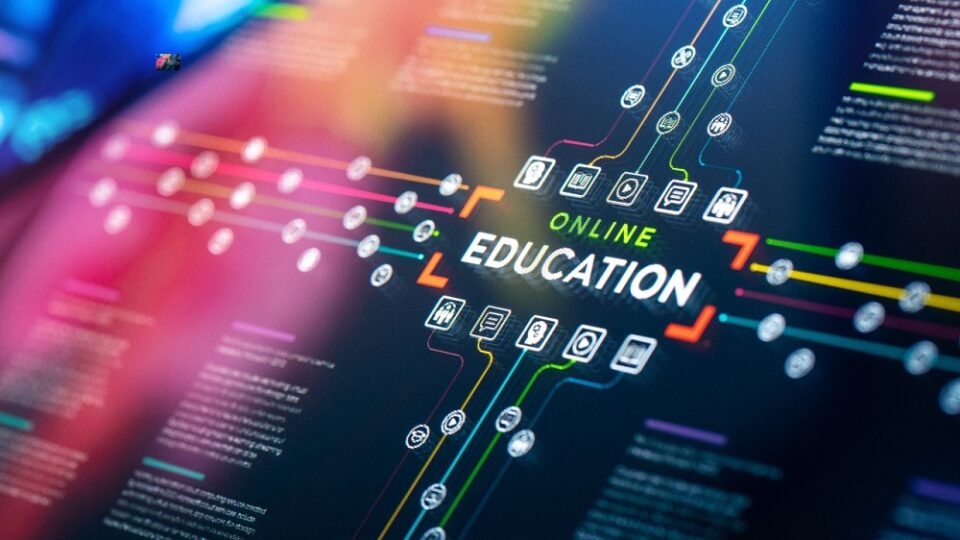Education has always been a cornerstone of progress, helping individuals grow and societies advance. However, the way we learn is evolving at a pace never seen before, thanks to the rapid development of technology. The traditional classroom model—where students gather in a physical space, listen to lectures, and take notes—is being transformed into a dynamic, interactive, and more personalized learning experience. But how exactly is technology reshaping education, and what does the future hold?
1. The Rise of Online Learning
One of the most significant changes in education is the shift to online learning. What was once considered an alternative option has now become mainstream, especially after the global pandemic. With the rise of Massive Open Online Courses (MOOCs), platforms like Coursera, edX, and Udemy offer thousands of courses from top universities and institutions worldwide. Students now have the opportunity to learn at their own pace, from the comfort of their homes, and often at a fraction of the cost of traditional education.
This flexibility means that education is no longer bound by geography or time. Whether you’re a full-time employee looking to pick up new skills or a high school student preparing for college, online learning platforms provide access to quality education anytime, anywhere.
2. Personalized Learning with Artificial Intelligence (AI)
Artificial intelligence (AI) is playing a crucial role in making education more personalized. Traditionally, classrooms have had a one-size-fits-all approach, but AI is changing that. Learning platforms are using AI to track student progress and tailor lessons based on individual learning speeds and styles. For example, if a student is struggling with a particular math concept, the system can provide additional resources or exercises to help them improve.
AI tutors and chatbots are also becoming more prevalent, providing students with real-time assistance, feedback, and support outside the traditional school hours. This level of personalization helps cater to each student’s unique needs, ensuring that no one is left behind.
3. Virtual Reality (VR) and Augmented Reality (AR) in the Classroom
Virtual Reality (VR) and Augmented Reality (AR) are revolutionizing the way subjects are taught. Imagine learning about ancient history by virtually walking through the streets of ancient Rome or studying the solar system by interacting with 3D models of planets in your living room. VR and AR bring abstract concepts to life, making learning more engaging and interactive.
These technologies are particularly beneficial for subjects like science and history, where visualization can significantly enhance understanding. Medical students can practice surgeries in virtual environments, and geography students can explore ecosystems in 3D without leaving their classrooms. By making education more immersive, VR and AR foster deeper learning and retention.
4. Collaboration and Communication Tools
Gone are the days when learning was confined to textbooks and lectures. Today, students can collaborate on projects with their peers from around the world using tools like Google Docs, Zoom, and Slack. These collaboration platforms enable group work in real-time, regardless of physical location. Students can participate in discussions, share ideas, and co-create content in ways that were unimaginable just a few years ago.
Furthermore, teachers can now communicate with students and parents more efficiently, using apps like Google Classroom and Remind. This instant communication enhances engagement and allows for continuous feedback, creating a more connected and supportive learning environment.
5. Lifelong Learning and Upskilling
As technology evolves, so do the skills required in the workforce. In this fast-changing landscape, lifelong learning has become essential. Platforms offering bite-sized courses, webinars, and certification programs are empowering individuals to keep up with industry trends and acquire new skills as needed. From coding to data analysis, the availability of short, focused learning experiences ensures that learners can remain competitive in their fields.
This shift towards continuous learning means education doesn’t stop after graduation. Technology enables individuals to remain students throughout their lives, constantly adapting to new opportunities and challenges.
Addressing Challenges: Digital Divide and Teacher Training
While technology holds immense promise, it’s essential to address the challenges it brings. One of the most pressing issues is the digital divide—access to technology and high-speed internet is still not universal, particularly in low-income and rural areas. Without addressing this gap, many students could be left behind in the transition to tech-driven education.
Additionally, teachers need to be equipped with the skills and tools to effectively integrate technology into their classrooms. Professional development and training are critical to ensure educators can harness the full potential of these new tools.
Conclusion: The Future of Learning
The future of education is undoubtedly exciting. With advancements in AI, VR, online learning, and collaboration tools, we are entering an era where learning is more accessible, personalized, and engaging than ever before. However, for this future to be fully realized, it’s crucial to ensure equitable access to these technologies and provide support for educators as they adapt to these new tools.
As technology continues to shape the world around us, education will remain a key driver of progress. By embracing these innovations, we can create learning environments that are not only effective but also inspiring—helping individuals reach their full potential in ways we could only dream of a few years ago.

